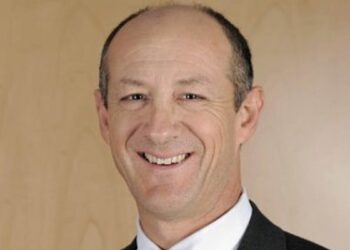In its pre-budget submission, the SMSF Association has proposed for a more practical approach towards non-geared unit trust breaches, with its unnecessary strict criteria limiting SMSF trustees.
With the criteria for the unit trust under SIS regulation section must be met at the time of the initial investment by the SMSF, 13.22D regulates trigger events which cause a NGUT to breach regulation 13.22B or 13.22C and render the investment as an in-house asset, according to the SMSF Association.
“These trigger events align with the criteria in 13.22B and 13.22C. For example, if the trustee of the unit trust undertakes a borrowing or invests in a listed share, the unit trust will no longer be a 13.22B or 13.22C unit trust. Importantly, if any of the requirements of regulation 13.22D are breached, the unit trust ceases to be a 13.22B or 13.22C unit trust,” the association stated.
“Such a breach can never be rectified. This means a trigger event in regulation 13.22D will taint the unit trust forever for that superannuation fund.
“The consequence of this is that the unit trust would then form part of the in-house assets of the SMSF.
“This could trigger significant taxation and stamp duty consequences, or if the value does not breach the 5 per cent limit, the SMSF has the option to retain its investment in the unit trust and, in which case, it would need to continue to monitor the 5 per cent limit.”
The SMSF Association believes the penalty for a breach of the 13.22D is unnecessarily strict and impractical.
“This is because the usual advised remedy is for SMSF trustees to sell the units they hold in the NGUT as required by the law and then re-purchase the same structure,” the SMSF Association said.
“Regardless of how small a breach is, such as a $1 overdraft, the unit trust is compromised. This includes the approved SMSF auditor not being able to apply any prospective green tick of approval.”
The SMSF Association gave an example where a NGUT has commercial property valued at $1.4 million and the NGUT is 100 per cent owned by an SMSF and the NGUT then breaches the criteria in regulation 13.22C.
“Despite the NGUT owning business real property (‘BRP’), the units will need to be transferred from the SMSF as these constitute an in-house asset,” the SMSF Association explained.
“As an example, Victorian stamp duty on transfer of these units is $77,000. An exemption may be possible if the transfer is to a member in kind if they are entitled to be paid (e.g. attained 65 years). However, in many instances, duty would be payable unless the value of dutiable property in the NGUT was below the relevant threshold (e.g. Victoria, $1 million; and NSW, $2 million).”
Furthermore, capital gains will also need to be paid on the disposal of the asset, and the association analysed that to facilitate this transfer, if the members may wish to retain the property in the SMSF, it would cost approximately $2,000 to establish a new NGUT (including corporate trustee and duty), plus adviser costs of approximately $5,000 and transfer costs of property title to the new NGUT of approximately $5,000.
“Therefore, a relatively minor contravention could give rise to around $100,000 in costs,” the SMSF Association said.
“Alternatively, if the members wish to transfer the property outside super, they may need to arrange borrowings and incur adviser and legal costs. In addition, the usual disposal costs with property would apply.”
The SMSF Association has proposed to allow trustees to implement a plan to rectify the breach before the end of the following financial year.
“We propose that breaches of regulation 13.22D are able to be rectified in an appropriate period. A breach would still occur, but the ability to rectify the breach removes the cost and administrative burden of selling assets and re-purchasing them,” the association said.
“This would be akin to the practical approach taken when trustees breach the in-house asset rules. The in-house asset rules require the trustees of SMSFs who have assets that exceed the 5 per cent in-house asset limit at the end of a financial year to prepare a written plan to rectify the situation before the end of the following financial year.
“The plan must specify the amount that is above the in-house asset limit and set out what steps will be undertaken to reduce the fund’s in-house assets to below the 5 per cent limit (generally by disposing or selling excess assets). Each trustee of the fund must ensure that the steps in the plan are carried out within the next year of income.”


